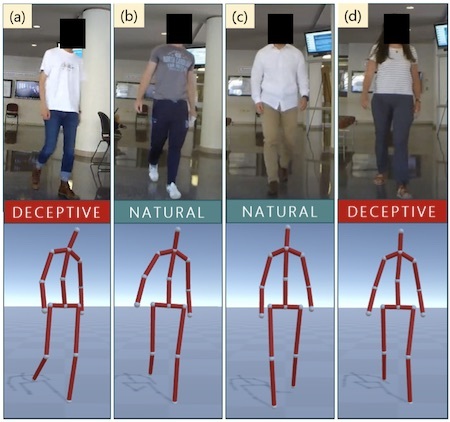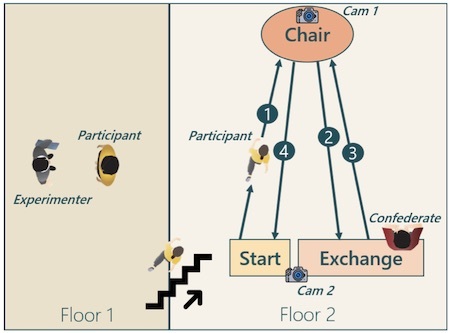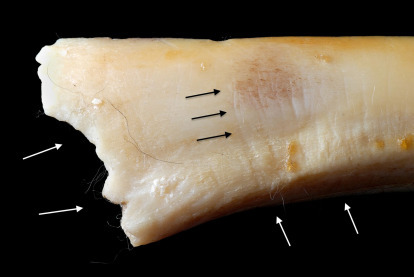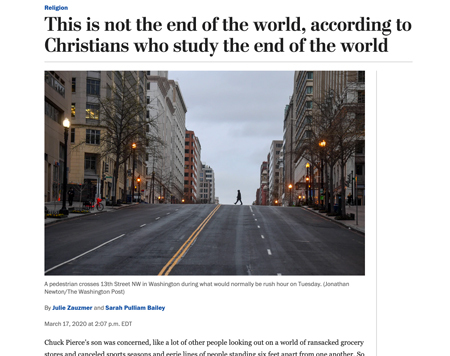Marc Abrahams's Blog, page 122
March 27, 2020
Engineering Challenge: Design a bicycle for a flea
This month’s Engineering Challenge competition: Design a bicycle for a flea.
Please send your completed design, with test results (include a clear, undoctored video please) to:
Improbable Engineering Challenge: Flea Cycle
℅ Annals of Improbable Research

March 26, 2020
Improbable video: The net, the flea, the duck and its lover
The net, the flea, the duck and its lover all appear in Improbable Research Collection #101:
Our series of tiny bits-and-pieces videos peeks at improbable research — research that makes people laugh, then think. Here, below, is a skimpy guide to these little videos. We might make some more.

March 25, 2020
What Chewed on That?
Taphonomic detectives can easily get caught up in wondering what kind of animal chewed on things that deteriorated and decayed to the point where, when those things were found, the remains of those things deserved to be called “the remains.”
A chapter of the book Forensic Taphonomy and Ecology of North American Scavengers, by Susan N. Sincerbox and Elizabeth A. DiGangi, explores many of the many varieties of the who-chewed-that question.
The chapter has this abstract:
Chapter 5 – What Big Teeth You Have: Taphonomic Signatures of North American Scavengers
There are several taxa from vertebrate species of the North American scavenger guild that are important from a forensic standpoint. This chapter presents a summarized account of their habitats, distribution, behavior, morphology, and taphonomic signatures on bone and soft tissue. Case studies from the literature are used to illustrate or highlight particular behaviors or signatures. Distribution maps and photographs of several taxa are included, as are tables that summarize ecological and morphological characteristics of each species such as habitat, dental formula, animal size, conservation status, and typical taphonomic signatures. The taxa and species discussed include canids (i.e., the family that includes dogs), vultures, deer, corvids (i.e., the family that includes crows), crocodilians, opossums, felids (i.e., the family that includes cats), raccoons, rodents, sharks, pigs, and bears.

March 23, 2020
Science fallacies in the Jingle Jangle Jungle
(The Archies : 1968)
If you type the phrase “Jingle Jangle” into your favourite internet search engine, there’s a good chance that the first result will be a link to the video above. Or maybe this book from Axel Scheffler. Less likely in the top-ranking results is a mention of a pair of scientific time-wasters first described over 100 years ago. The Jingle and Jangle Fallacies.
“The jingle and jangle fallacies—by no means limited to personality psychology—waste scientific time. The one suggests agreements that do not exist; the other involves useless redundancies, sometimes because of the absence of historical knowledge, that lead to the “reinvent[ion of constructs under new labels” (Holroyd & Coyne, 1987, p. 367). Together, these errors work to prevent the recognition of correspondences that could help build cumulative knowledge.”
(from Psychol Bull. 1995 Mar;117(2):187-215. A contrarian view of the five-factor approach to personality description. Block J.)
To clarify :
A ‘Jingle Fallacy’ is the erroneous assumption that two quite different things are the same, simply because they have the same name.
A ‘Jangle Fallacy’ is the erroneous assumption that two very similar things are different, simply because they have different names.
BONUSES :
Jingle Jangle Jungle (1968) from Walden Robert Cassotto
Jingle Jangle Jingle (1942) Kay Kyser
Research research by Martin Gardiner

March 22, 2020
Bibi’s little video tour of some Ig Nobel winners
Bibi Science made this little video tour of some Ig Nobel Prize winning things:

March 21, 2020
Last year’s Ig Nobel show at Imperial College London
The 2020 Ig Nobel Euro (and Brexitannia) Tour was scheduled to visit Imperial College London today, March 21. But alas, because of the COVID-19 pandemic, the 2020 tour was truncated last week, after its first show.
As compensation, here’s video of last year’s Ig Nobel show at Imperial College, on March 16, 2019. The show concluded with the London premiere performance of the sea-shanty-enhanced version of William Topaz McGonagall‘s most beloved bad poem, “The Tay Bridge Disaster“:
The 2019 show was half of a two-event festival. The other half was BAHFest London—here’s video of that:
The Ig Nobel / BAHFest pairing (with a snazzy name: Peculiar) was going to repeat this year, today in fact, but COVID-19 got in the way. We have high hopes that the 2020 show can happen later in the year.

March 20, 2020
Is This True? “The Liar’s Walk—Detecting Deception with Gait and Gesture”
A new study about walking and liars and computers is bountiful for teachers who want their students to decide whether to believe bold claims. See if you can count the bold claims made in the study.
“The Liar’s Walk—Detecting Deception with Gait and Gesture,” Tanmay Randhavane, Uttaran Bhattacharya, Kyra Kapsaskis, Kurt Gray, Aniket Bera, Dinesh Manocha, arXiv:1912.06874v1, December 14, 2019.

The authors, at the University of Maryland and the University of North Carolina, explain:
We present a data-driven deep neural algorithm for detecting deceptive walking behavior using nonverbal cues like gaits and gestures. We conducted an elaborate user study, where we recorded many participants performing tasks involving deceptive walking. We extract the participants’ walking gaits as series of 3D poses. We annotate various gestures performed by participants during their tasks. Based on the gait and gesture data, we train an LSTM-based [Long short-term memory] deep neural network to obtain deep features. Finally, we use a combination of psychology-based gait, gesture, and deep features to detect deceptive walking with an accuracy of 93.4%…. To the best of our knowledge, ours is the first algorithm to detect deceptive behavior using non-verbal cues of gait and gesture.

The researchers made use of bits of knowledge and belief they found in many places:
In addition to extracting gaits, we also annotate the gestures performed by the participants during the four walks. Prior literature on deception suggests that people showing deceptive behavior often feel distressed, and levels of discomfort can be used to detect a person’s truthfulness. These levels of discomfort may appear in fidgeting (adjusting their shirt/moving their hands) or while glancing at objects such as a clock or a watch. Touching the face around the forehead, neck, or back of the head is also an indicator of discomfort related to deception. We use these findings and consider the following set of gestures:{Hands In Pockets, Looking Around, Touching Face, Touching Shirt/Jackets, Touching Hair, Hands Folded, Looking at Phone}.

Your advice about anti-boredom Improbable episodes?
With so many people cycling between worry and boredom, because of the COVID-19 pandemic, maybe we can help, a little, to crack that boredom. We’re thinking about doing a series of quick Improbable Research podcast episodes about studies that make people laugh, then think. We have a goodly supply. Some of the first might even come from the special BOREDOM issue of the magazine.
I would appreciate your advice, if you have any, about:
how often, how short, and how anything else (should they be audio, or video?) we should make these new little things. You can reach me at .
Good luck and good health to you, and to all of us, in these queasily improbable times!
Marc

March 19, 2020
A high concept design for a killer roller coaster
Different engineers have different ways of having fun. This is one way:
The design engineer, Julijonas Urbonas, gives it a simple description: “Euthanasia Coaster is a hypothetic death machine in the form of a roller coaster, engineered to humanely – with elegance and euphoria – take the life of a human being.”

Mathematics and the end of the world, predictably
A prize-winning profession confidently confronts a new challenge.
Some professionals—professionals who professionally calculate a date on which the world will end—have calculated that the COVID-19 pandemic is not a goodbye-everyone harbinger. The Washington Post reports, on March 17, 2020:
This is not the end of the world, according to Christians who study the end of the world
The worldwide upheaval caused by the fast-spreading novel coronavirus pandemic has many people reaching for their Bibles, and some starting to wonder: Could this be a sign of the apocalypse?
It sure might feel apocalyptic. But not if you ask Christian writers and pastors who have spent years focusing their message on the Book of Revelation — the New Testament’s final book…. Most of these Revelation-focused prophesiers don’t see coronavirus as heralding the Second Coming and the end of life on Earth as we know it….
A Prize-Winning History for the Profession
The profession as a whole—the profession of calculating when the world will cease—has a celebrated history.
The 2011 Ig Nobel Prize for mathematics was awarded to Dorothy Martin of the USA (who predicted the world would end in 1954), Pat Robertson of the USA (who predicted the world would end in 1982), Elizabeth Clare Prophet of the USA (who predicted the world would end in 1990), Lee Jang Rim of KOREA (who predicted the world would end in 1992), Credonia Mwerinde of UGANDA (who predicted the world would end in 1999), and Harold Camping of the USA (who predicted the world would end on September 6, 1994 and later predicted that the world will end on October 21, 2011), for teaching the world to be careful when making mathematical assumptions and calculations.

Marc Abrahams's Blog
- Marc Abrahams's profile
- 14 followers







